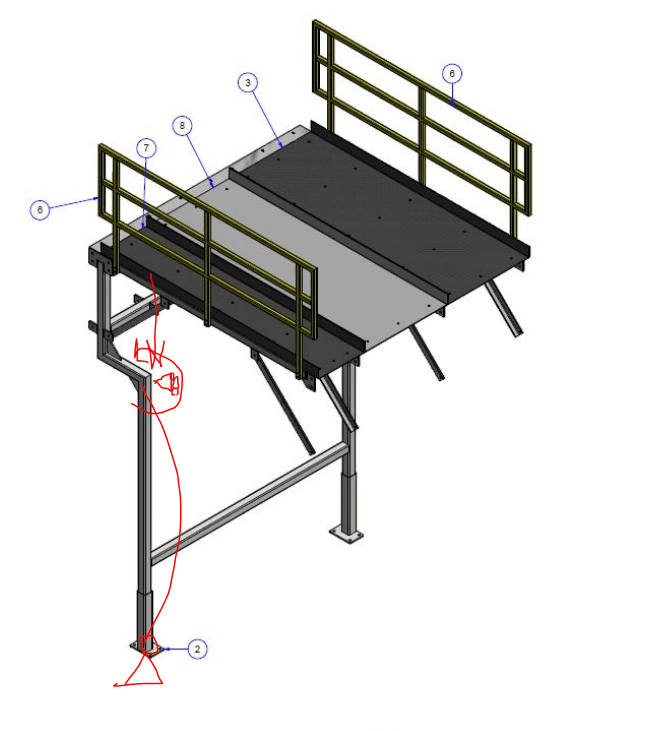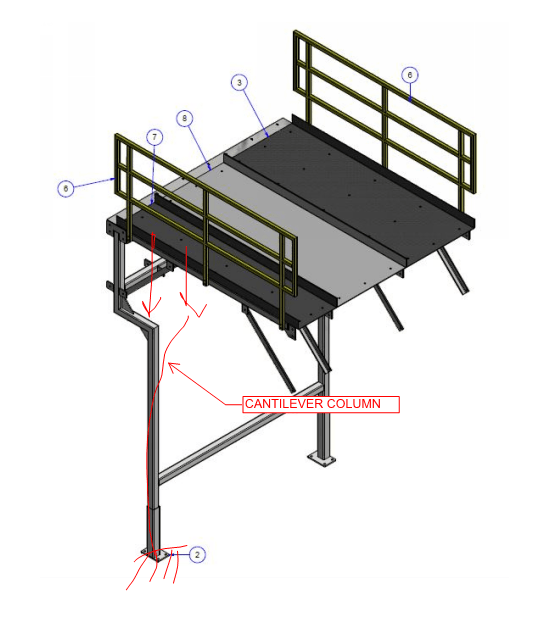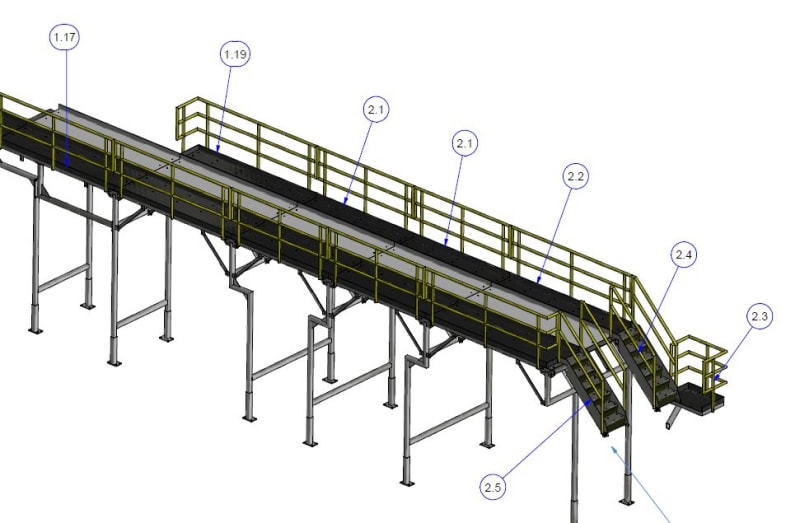Hi all,
I am working on a project where I have to justify a system of frames that were installed without permits. The frames support a conveyor system and a catwalk that is only used for maintenance. The problem that I'm facing is with the columns because some of them are not straight and have bends (as seen on the attachment). How do I go about analyzing these columns? Can someone point me in the right direction?
Thanks
I am working on a project where I have to justify a system of frames that were installed without permits. The frames support a conveyor system and a catwalk that is only used for maintenance. The problem that I'm facing is with the columns because some of them are not straight and have bends (as seen on the attachment). How do I go about analyzing these columns? Can someone point me in the right direction?
Thanks



